Cognitive and metacognitive activity in mathematical problem solving: prefrontal and parietal patterns
- PMID: 21264650
- PMCID: PMC3048912
- DOI: 10.3758/s13415-010-0011-0
Cognitive and metacognitive activity in mathematical problem solving: prefrontal and parietal patterns
Abstract
Students were taught an algorithm for solving a new class of mathematical problems. Occasionally in the sequence of problems, they encountered exception problems that required that they extend the algorithm. Regular and exception problems were associated with different patterns of brain activation. Some regions showed a Cognitive pattern of being active only until the problem was solved and no difference between regular or exception problems. Other regions showed a Metacognitive pattern of greater activity for exception problems and activity that extended into the post-solution period, particularly when an error was made. The Cognitive regions included some of parietal and prefrontal regions associated with the triple-code theory of (Dehaene, S., Piazza, M., Pinel, P., & Cohen, L. (2003). Three parietal circuits for number processing. Cognitive Neuropsychology, 20, 487-506) and associated with algebra equation solving in the ACT-R theory (Anderson, J. R. (2005). Human symbol manipulation within an 911 integrated cognitive architecture. Cognitive science, 29, 313-342. Metacognitive regions included the superior prefrontal gyrus, the angular gyrus of the triple-code theory, and frontopolar regions.
Figures


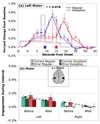


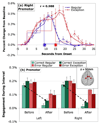
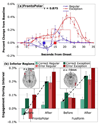
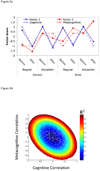

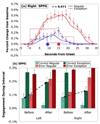
Similar articles
-
Brain networks supporting execution of mathematical skills versus acquisition of new mathematical competence.PLoS One. 2012;7(12):e50154. doi: 10.1371/journal.pone.0050154. Epub 2012 Dec 10. PLoS One. 2012. PMID: 23251361 Free PMC article.
-
The roles of prefrontal and posterior parietal cortex in algebra problem solving: a case of using cognitive modeling to inform neuroimaging data.Neuroimage. 2007 Apr 15;35(3):1365-77. doi: 10.1016/j.neuroimage.2007.01.032. Epub 2007 Feb 13. Neuroimage. 2007. PMID: 17355908
-
Integral calculus problem solving: an fMRI investigation.Neuroreport. 2008 Jul 16;19(11):1095-9. doi: 10.1097/WNR.0b013e328303fd85. Neuroreport. 2008. PMID: 18596607 Free PMC article.
-
The role of the right temporoparietal junction in social interaction: how low-level computational processes contribute to meta-cognition.Neuroscientist. 2007 Dec;13(6):580-93. doi: 10.1177/1073858407304654. Epub 2007 Oct 2. Neuroscientist. 2007. PMID: 17911216 Review.
-
Planning and problem solving: from neuropsychology to functional neuroimaging.J Physiol Paris. 2006 Jun;99(4-6):308-17. doi: 10.1016/j.jphysparis.2006.03.014. Epub 2006 Jun 5. J Physiol Paris. 2006. PMID: 16750617 Review.
Cited by
-
Metaphorical motion in mathematical reasoning: further evidence for pre-motor implementation of structure mapping in abstract domains.Cogn Process. 2013 Aug;14(3):217-29. doi: 10.1007/s10339-013-0555-3. Epub 2013 Mar 5. Cogn Process. 2013. PMID: 23459865
-
Using brain imaging to track problem solving in a complex state space.Neuroimage. 2012 Mar;60(1):633-43. doi: 10.1016/j.neuroimage.2011.12.025. Epub 2011 Dec 22. Neuroimage. 2012. PMID: 22209783 Free PMC article.
-
Emerging neurodevelopmental perspectives on mathematical learning.Dev Rev. 2021 Jun;60:100964. doi: 10.1016/j.dr.2021.100964. Epub 2021 May 3. Dev Rev. 2021. PMID: 34108794 Free PMC article.
-
Math anxiety and executive function: Neural influences of task switching on arithmetic processing.Cogn Affect Behav Neurosci. 2020 Apr;20(2):309-325. doi: 10.3758/s13415-020-00770-z. Cogn Affect Behav Neurosci. 2020. PMID: 32112298
-
Brain networks supporting execution of mathematical skills versus acquisition of new mathematical competence.PLoS One. 2012;7(12):e50154. doi: 10.1371/journal.pone.0050154. Epub 2012 Dec 10. PLoS One. 2012. PMID: 23251361 Free PMC article.
References
-
- Anderson JR. Human symbol manipulation within an integrated cognitive architecture. Cognitive Science. 2005;29:313–342. - PubMed
-
- Anderson JR. How Can the Human Mind Occur in the Physical Universe? New York: Oxford University Press; 2007.
-
- Anderson JR, Bothell D, Byrne MD, Douglass S, Lebiere C, Qin Y. An integrated theory of mind. Psychological Review. 2004;111:1036–1060. - PubMed
-
- Anderson JR, Carter CS, Fincham JM, Ravizza SM, Rosenberg-Lee M. Using fMRI to test models of complex cognition. Cognitive Science. 2008;32:1323–1348. - PubMed
Publication types
MeSH terms
Substances
Grants and funding
LinkOut - more resources
Full Text Sources

